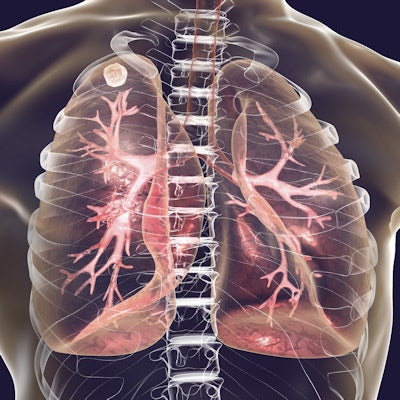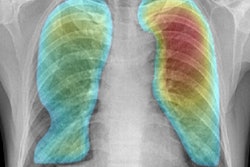
When FDG-PET/CT scans reveal lingering metabolic activity in the lungs of tuberculosis (TB) patients after treatment, approximately 10% of them will experience a relapse of the disease within six months, according to a study published online August 26 in the Journal of Nuclear Medicine.
Conversely, the researchers found no cases of relapse among patients with pulmonary tuberculosis who successfully responded to the same six weeks of treatment and showed no signs of the condition on FDG-PET/CT scans.
"This [study] shows that FDG-PET/CT holds a potential to be used for determining the adequacy of chemotherapy in the management of tuberculosis and consequently for use as a noninvasive surrogate for evaluating the efficacy of antituberculous drugs in new drug development and in experiments design to determine optimum treatment duration," wrote the authors, led by Dr. Ismaheel Lawal from the University of Pretoria and Steve Biko Academic Hospital in South Africa.
Similar to the way in which FDG is taken up by malignant tumors, the glucose radiotracer also accumulates at the location of tissue and inflammation associated with tuberculous. Previous studies, including research by Lawal and colleagues, have cited the hybrid modality's efficacy in predicting response to tuberculosis treatment in patients with pulmonary and extrapulmonary tuberculosis, but there is limited knowledge on how well FDG-PET/CT can predict which patients might relapse after treatment.
Currently, approximately 5% of patients with drug-sensitive pulmonary TB will relapse within six months of treatment, and as much as 20% of patients on a four-month antituberculosis regimen may experience relapse, according to the authors.
"Robust data on the predictive ability of end-of-treatment FDG-PET/CT may prove useful in the application [of the modality] as a noninvasive imaging tool in the development of more effective antituberculous chemotherapy for shorter treatment duration," they wrote. "We hypothesized that patients who show residual metabolic activity on end-of-treatment FDG-PET/CT will be at increased risk of relapse of tuberculosis within six months of completing a standard course of antituberculosis treatment for drug-sensitive pulmonary tuberculosis."
The researchers analyzed 53 patients (mean age, 37.8 ± 11.3 years) who underwent FDG-PET/CT (Biograph 40 TruePoint, Siemens Healthineers) scans within two week of the end of their treatment. At that time, 33 patients (62%) still showed signs of metabolic activity in their lungs on their FDG-PET images, while 20 patients (38%) showed no such evidence and were considered to have successfully responded to treatment. The subjects then were evaluated at their home every month for six months by community health workers.
At the six-month mark, three (9%) of the 33 patients with residual metabolic activity on earlier FDG-PET images relapsed and were treated for disease in both lungs. The three patients relapsed at four months, five months, and six months, respectively. In fact, follow-up FDG-PET/CT scans confirmed that the relapses occurred at the areas of residual metabolic activity at the end of treatment.
"Our study has many strengths including the strict entry criteria we applied in selecting patients," Lawal and colleagues added. "Only patients who had a positive culture at diagnosis were included. We screened patients before study entry to eliminate confounding factors. Also, we followed patients up including home visit monthly to screen for relapse."




















